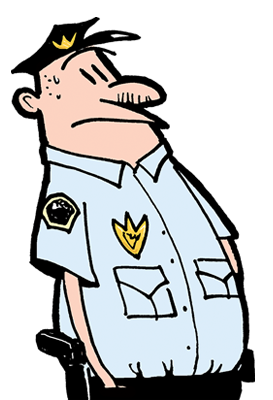Support Fatal Encounters
Donate Today!
I want to tell you a story. It’s sort of an “inside baseball” story, but maybe it’ll help you to understand that I’m not heading up the Fatal Encounters project because I don’t like police or because I particularly enjoy doing the research. I got involved in this project because I was offended that our government was lying to us. Simple as that.
Let me make a long story short. I was going home from work as the editor of the Reno News & Review on May 18, 2012, when I saw a scene of chaos in a little neighborhood off a main road–cop cars and police everywhere. I knew instinctively that either a cop had killed somebody or somebody had killed a cop. An obvious and simple question arose in my mind: How often does that happen? So I went home, cracked a bottle of red wine, opened my laptop, and started searching.
It didn’t take me long to realize that nobody really knew the answer. It wasn’t much longer before I realized the FBI had the best numbers as a supplement to their Uniform Crime Report database. Drilling down to the spreadsheets that contained the data took a bit longer, but for some inexplicable reason, I went straight to Florida, and I saw that, according to the FBI, nobody had ever been killed by a police officer in Florida.
That moment was like a light bulb had been turned on. In that instant, I realized U.S. media had regurgitated the numbers the FBI had reported for decades–between 300 and 400 deaths each year–without ever verifying them. And the numbers being reported were basically pulled out of thin air. If I had picked any other state that regularly reported its officer-involved deaths, the story would have probably ended right there, but Florida was the one state that never participated in the Uniform Crime Report data collection.
I was naïve when I started collecting information about people killed by police. I assumed the government was lying just a little bit. I figured, at most, the government was misrepresenting the numbers of people its police killed by 10 percent. That meant, I’d have to research about 5,200 deaths. Well, today, I’ve personally researched or fact-checked 21,911 deaths. And within 60 days, the first draft of the dataset will be complete. We have five more states to finish.
We’re already the most authoritative database on deadly police violence, but let me tell you something: Now’s when it gets interesting. Let me offer you a metaphor. Suppose you want to thread 50 needles that are buried in 50 haystacks. Finding the needles is the hard part. It might take you five years to find them. But threading those 50 needles once they’re in hand would probably only take you 10 minutes.
We’re within five states of having collected the needles. Want to know whether those people were armed or unarmed? Collection of that information can be automated. Want to know whether the person was a veteran? Again, once the name, place and date of death is known, a script might be able answer those questions for all 22,000 deaths in seconds.
This is what I ask you to support. Help us get past the needle-in-a-haystack phase so that Fatal Encounters can fulfill the promise of allowing people to examine officer-involved deaths across regions and across time so Americans and decision makers can emulate best practices in training, protocol and procedures to produce the best outcomes: The fewest people killed by police and fewest police killed by people.
Thank you,
D. Brian Burghart
 |
Executive Director, fatalencounters.org

